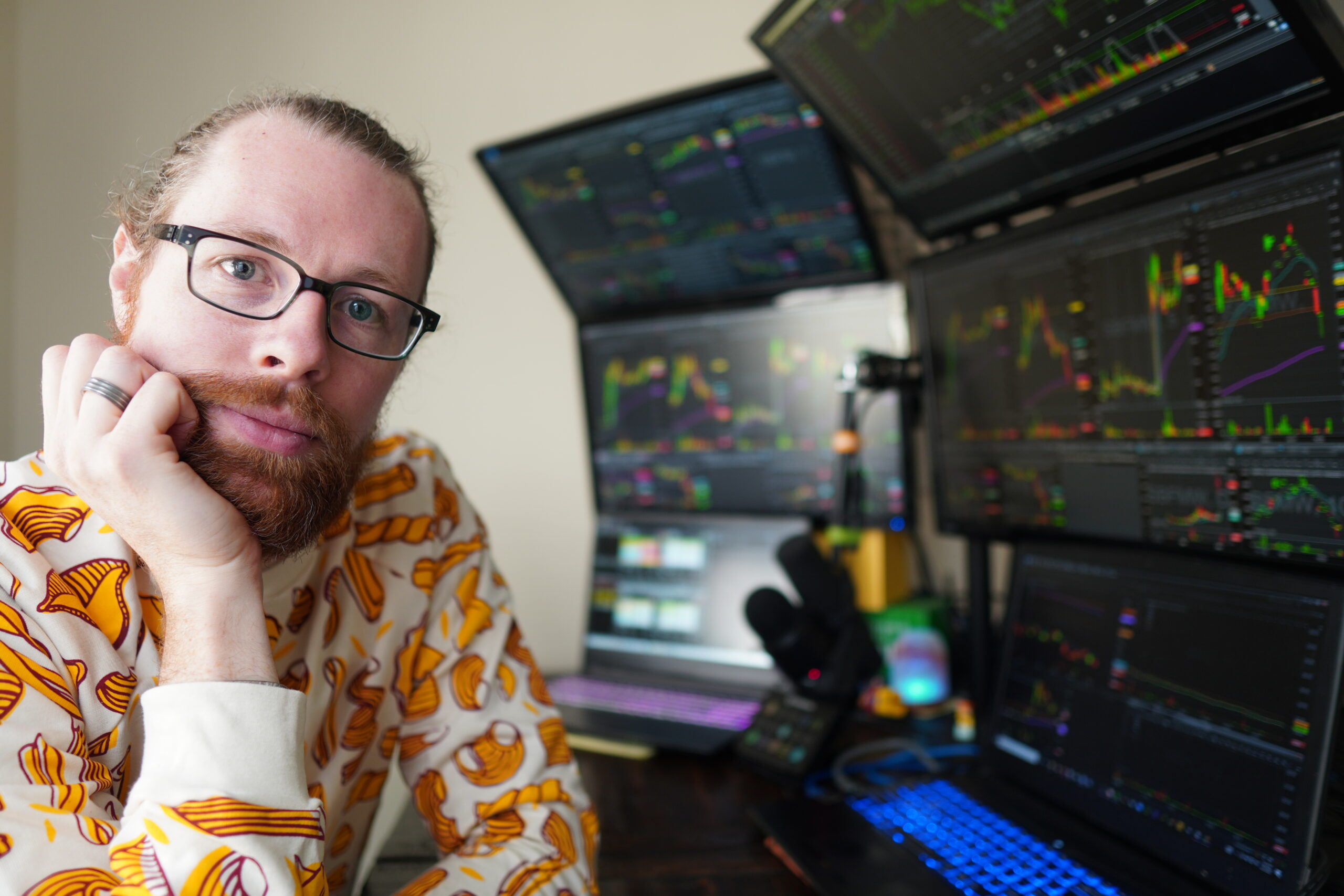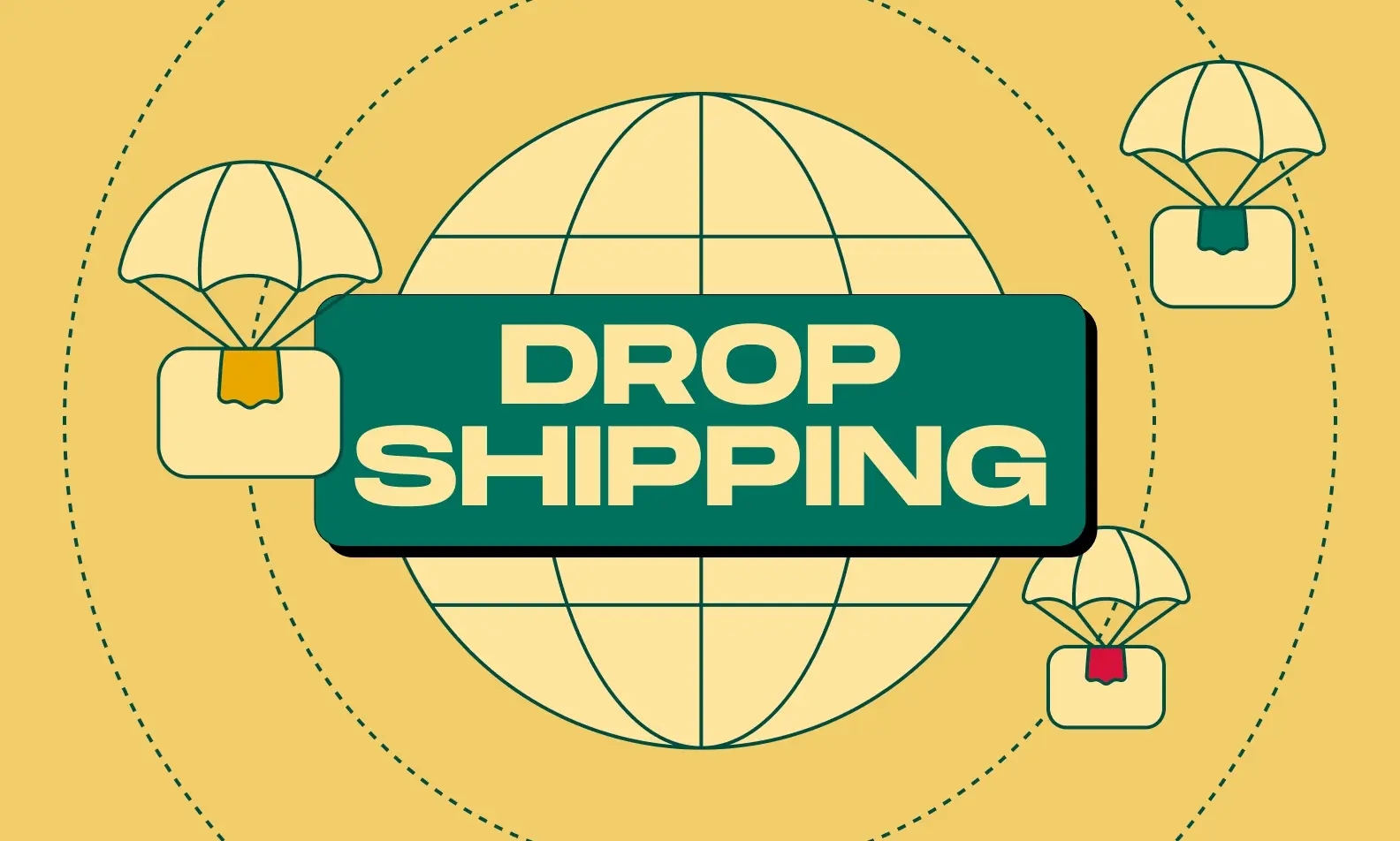Day Trading vs Dropshipping: Detailed Comparison
Compare day trading vs dropshipping to find which fits your goals. Learn the pros, risks, and profit potential of both business models.

In today's fast-paced world, making money online is more appealing than ever. Two of the most popular methods for achieving this are day trading and dropshipping. Each of these paths has its pros and cons, and it's crucial to pick the right one for your goals. If you’re considering trading, knowing the best brokers for day trading can make a huge difference in your success and profitability.
You'll want to consider factors such as risk, time, and strategies to maximize your earnings. This guide will explore these two options, helping you make the best choice for your journey. Plus, for those interested in day trading, we'll highlight the best brokers to use in 2023.
AquaFunded’s funded trading program can help you succeed in day trading without risking your own money.
Pros and Cons of Day Trading

Pros of Day Trading
1. Big Wins on the Table
Day trading can be like catching a wave at its peak. With the right skills, you can ride small price shifts to impressive profits. It’s all about knowing the market and acting with precision.
2. Be Your Own Boss
Day trading breaks the 9-to-5 chains. You have the freedom to work from anywhere with just an internet connection. Set your own hours and create strategies that fit your style.
3. Quick Thinking Required
In day trading, you’re constantly on your toes. You need to analyze and execute trades fast. This environment can be thrilling for those who love a challenge and want to sharpen their decision-making skills.
4. No Overnight Surprises
By closing trades daily, you dodge the risk of unexpected market changes overnight. This approach can provide you with better control over your investments and limit potential losses.
5. In and Out with Ease
Highly liquid markets mean you can enter and exit trades quickly. With advanced tech and online platforms, day trading is more accessible than ever.
6. Learn as You Go
Day trading provides instant feedback. You’ll quickly see what works and what doesn’t, helping you refine your strategies and grow as a trader.
Cons of Day Trading
1. Risky Business
The potential for loss matches the potential for profit. Day trading is a high-risk activity, and even the most experienced traders can face substantial losses if the market turns against them.
2. Time-Consuming Commitment
Think of day trading as a full-time job. It demands intense focus and commitment, with hours spent analyzing markets and managing trades.
3. Emotional Rollercoaster
The emotional strain of day trading can be taxing. The pressure to act fast, the fear of losses, and the excitement of gains can send you on a wild emotional ride. Staying balanced is key.
4. Costs Add Up
With frequent trades, transaction fees can pile up and eat into your profits. You should consider these costs when planning your trading strategy.
5. Trading Can Be Addictive
The thrill of the trade can lead to unhealthy habits. Some traders find themselves making reckless decisions. Balance is crucial to protect both your financial and mental health.
6. Constantly on the Clock
Successful day trading demands constant research and analysis. You need to stay on top of market trends and news, which can be time-consuming and demanding.
Pros and Cons of Dropshipping

Pros of Dropshipping
1. Skip the Inventory Hassle
Forget about buying inventory upfront or finding a place to store it. With dropshipping, you never touch the product. This means you can test new products without risk or have a backup plan if you oversell what’s in your warehouse.
2. Quick and Easy Setup
Starting a dropshipping business might be the easiest way to dive into retail. Once you’ve found a niche, locate a dropshipping supplier, agree on pricing, and start promoting. It’s that simple compared to traditional retail methods.
3. Keep Costs Low
Without the need to purchase inventory or manage a warehouse, your overhead costs remain low. As your business grows, these expenses might rise, but they’ll still be far less than a brick-and-mortar or typical e-commerce store.
4. Flexibility in Products and Work Location
Run your business from anywhere, with the flexibility to choose what products to sell. You can list items from suppliers, testing what resonates with your audience without being tied down to a single location or product line.
5. Scale Without the Strain
Growing a traditional business often means doubling your workload. In dropshipping, it’s the suppliers who manage increased orders, allowing you to scale without hiring more staff or making significant operational changes.
Cons of Dropshipping
1. Higher Costs Than Traditional Retail
The convenience of dropshipping comes at a cost. Suppliers typically charge more for branded packages, which can impact your profit margins. You’ll need to decide whether to pass these costs to customers or accept smaller margins initially.
2. Limited Quality Control
Quality and branding are beyond your control. If product or shipment issues arise, you’ll play the middleman, which can strain your relationship with customers and complicate operations.
3. Challenging Customer Support
Providing stellar customer service is tough when you’re not in control. Shipping updates can be challenging to relay, especially if multiple warehouses are involved, each using different couriers and schedules.
4. Inventory Tracking Woes
Tracking inventory with your own products is simple. However, with multiple suppliers, it presents a challenge. You might use technology to sync with their systems, but that’s not always feasible. A strong relationship with suppliers is crucial.
5. Shipping Complexities
Shipping can get tricky. Orders might ship from different suppliers at various times, making it hard to manage costs and logistics. You’ll need to decide whether to adjust shipping fees for customers or absorb the added costs.
For traders looking to turn their skills into substantial profits without risking their own capital, consider joining AquaFunded’s funded trading program. Get access to accounts up to $400K with flexible trading conditions and keep up to 100% of what you earn.
Related Reading
- Is Day Trading Illegal
- How Risky Is Day Trading
- Can You Make Money Day Trading
- Is Day Trading A Good Side Hustle
- How To Find Stocks For Day Trading
- What Type Of Trading Is Most Profitable
- How To Trade And Make Money
- Do You Pay Taxes On Day Trading
- How Long Does It Take To Become A Profitable Day Trader
- Can Day Trading Be A Career
Day Trading vs Dropshipping: Detailed Comparison

Understanding the Basics: Day Trading vs. Dropshipping
Dropshipping Basics
With dropshipping, you build an online store, market your products, and when a customer makes a purchase, you order from a supplier who ships the product directly to them. You don’t keep inventory. The focus is on marketing and selecting the right products. You’ll manage the store setup, supplier relationships, ad campaigns, customer service, returns, and conversions.
Day Trading Basics
Day trading is buying and selling financial instruments within the same trading day to profit from short-term price movements. It’s about analyzing charts and patterns and executing trades swiftly with strict risk management. Success hinges on strategy, discipline, and speed.
Entry Costs and Barriers: Starting Up
Dropshipping Startup Costs
You’ll face a low barrier to entry since you don’t need to stock inventory. However, you’ll still need funds for a domain, website, tools, ad spend, and product samples. Marketing often becomes a significant expense, and if ads fail to convert, you lose money. Finding reliable suppliers involves testing, samples, communication, and managing shipping times.
Day Trading Startup Costs
Day trading requires a significant amount of capital for brokerage margin and minimum account sizes. You’ll need trading tools like charting software, data feeds, and a broker with fast execution. There’s also an educational cost associated with learning trading strategies, risk management, and interpreting market behavior. Regulations may impose minimum equity requirements or restrictions.
Learning the Ropes: Skills and Knowledge
Dropshipping Skill Requirements
You’ll need to master digital marketing, including platforms like Facebook, TikTok, and Google Ads. Learning product research is crucial to finding in-demand items with manageable competition. You’ll also need to understand logistics, customer service, refunds, store UX, and conversion funnels. Mistakes often come from poor ad targeting, product choice, or website issues.
Day Trading Skill Requirements
You must become skilled in technical analysis, chart patterns, indicators, volume, and market psychology. Strong risk management is essential, including the use of stop-loss orders and effective position sizing. Developing emotional discipline to control fear and greed is crucial. You’ll need to read real-time market flow and respond to volatility quickly.
Risk and Volatility: Navigating the Ups and Downs
Dropshipping Risks
The risks are more business-related, like ad spend that doesn’t yield returns, supplier failures, shipping delays, chargebacks, returns, and platform policy changes. The downside is typically your invested ad budget or operational costs. Competition or saturation can quickly erode margins.
Day Trading Risks
Day trading involves high financial risk, with the potential to lose large sums quickly, especially if using leverage. Market volatility means sudden swings can cut into profits or amplify losses. Without strict risk controls, a single bad trade or series of trades can wipe out gains. Emotional and psychological pressure is high.
Time and Attention: The Daily Grind
Dropshipping Workload
After the initial setup, some phases may require less active engagement. However, sustaining success requires constantly adjusting ads, testing new products, and closely monitoring key metrics. During scale-up, you may need to spend many hours daily optimizing campaigns, testing creatives, and managing customer service. Growth often slows without active efforts.
Day Trading Workload
Day trading requires intense focus and concentration. You’ll monitor charts during market hours, enter and exit trades, and react quickly. Even outside trading hours, you’re likely studying, backtesting strategies, and reviewing performance. It requires full engagement during trading sessions.
Profit Potential and Growth: Scaling Up
Dropshipping Profit Potential
Profit depends on margins—product cost, shipping, and ad cost minus returns. Margins can shrink with competition. If you find winning products and scale your ad campaigns, income can grow. However, scalability often reaches its limits due to ad saturation, competition, and supplier constraints. Once a system is working, you can replicate it with additional products or markets.
Day Trading Profit Potential
The profit potential is high in favorable conditions if you possess the necessary skills and have an edge. However, returns don’t scale linearly with account size beyond a point—larger trades are more complex to execute without moving the market. It’s challenging to scale simply by increasing capital, as risk also scales. Many traders plateau, as improving edge, decision quality, or risk controls is harder at higher stakes.
How to Choose Between Day Trading and Dropshipping

What Are You Getting Into?
Day Trading
Day trading is all about profiting from market price changes during a single trading day. You’re dealing with stocks, forex, or crypto, aiming to capitalize on volatility. Consider staring at charts, making quick decisions, and feeling the pressure of the clock. It’s like playing a mental sport.
Dropshipping
Dropshipping involves running an online store. You find trending products, market them, and earn a profit on each sale. The focus here is on branding, marketing, and understanding customer behavior. It’s more about building systems than speed.
Mindset Check
Decide if you’re drawn to playing the markets or building a business. Do you prefer the mindset of a trader or an entrepreneur?
Risk Tolerance: How Much Can You Handle?
Day Trading
If you thrive in high-risk and fast-paced environments, day trading might be your thing. Expect volatility and potential losses as you learn to control your emotions and manage risks. If the idea of making quick decisions under pressure excites you, you're on the right track.
Dropshipping
If you’re more of a moderate risk-taker and patient builder, dropshipping is a better fit. You’ll make gradual investments in ads and store setup. Losses are slower and more manageable. If you like steady growth and developing systems, dropshipping aligns with your style.
Budget & Cash Flow: What’s In Your Wallet?
Day Trading
To start day trading, you typically need a capital investment of between $1,000 and $10,000. Plus, you need a cushion for potential losses. Profits aren’t immediate; breaking even might take time.
Dropshipping
You can start dropshipping with $300 to $1,000. This covers store setup, domain, and initial ads. Revenue can flow once you find the right product and ads, but scaling will need reinvestment.
Think About It
If you’re willing to risk your capital directly, consider trading. If you’d rather risk smaller amounts over time, dropshipping is a safer option.
Skills & Interests: What Do You Enjoy?
Day Trading
Are you into data, charts, and patterns? Do you enjoy analyzing graphs and numbers? If so, day trading is a natural choice. It also suits those who can stay calm under stress and prefer working solo.
Dropshipping
If marketing, branding, and creative storytelling appeal to you, consider dropshipping. You’ll likely enjoy designing ads, stores, and visuals. Dropshipping suits those who like testing ideas and building systems, preferring gradual scaling over fast results.
Time & Lifestyle: How Do You Want to Live?
Day Trading
Day trading demands complete focus during market hours. You need to monitor charts, react quickly, and remain vigilant. It’s not flexible—you can’t leave in the middle of a session.
Dropshipping
Dropshipping offers more flexibility. You can manage your store at your convenience, schedule ads, and automate tasks to save time. However, it still requires consistency and testing.
Emotional Strength: Can You Handle the Pressure?
Day Trading
Day trading comes with immediate pressure and the potential for quick losses. You’ll need emotional discipline to navigate the cycles of fear and greed.
Dropshipping
Dropshipping involves a longer frustration cycle. You’ll be testing multiple products, dealing with ad fatigue, and handling customer issues. Persistence is key.
Long-Term Goals: What’s the Endgame?
Day Trading
If you want a skill that lets you generate income from anywhere, even without products or staff, day trading is a good option. Just know it takes time to master.
Dropshipping
Suppose you’re looking to build a scalable business that could eventually run with a team, consider dropshipping. You can turn it into a brand over time.
Starting: What’s Your Best Path?
Try Dropshipping If
You’re new to online business and interested in digital marketing. You're okay with testing different products before finding success. You prefer visual creativity over financial analysis.
Try Day Trading If:
You already follow markets or enjoy analytics. You can handle risk, data, and pressure. You want to develop a financial skill rather than manage operations.
Hybrid Option: Why Not Both?
Some people start with both. They use dropshipping to build capital and then use day trading to invest that capital. This approach can be practical if you seek both business control and market experience. Just be disciplined to avoid burnout.
Final Thoughts: What’s Your Choice?
Choose day trading if you love numbers, speed, and challenges—and can handle risk. Choose dropshipping if you love marketing, design, and systems—and can stay patient. Suppose you think like an analyst, trade. If you feel like a creator, drop shipping is an excellent option for you.
Related Reading
- Can Day Trading Make You Rich
- Best Moving Average For Day Trading
- How Much Can You Make Day Trading With $1,000
- Day Trading Technical Analysis
- Day Trading Momentum Strategy
- Day Trading With AI
- Day Trading Futures For A Living
- Day Trading Setup
- Day Trading Goals
- Automated Day Trading
- Day Trading Success Rate
Join Our Funded Trading Program Today - Trade with our Capital and Keep up to 100% of the Profit.

Have you ever considered trading with significant capital without risking your own money? AquaFunded lets you do just that. It offers access to accounts up to $400,000, and the conditions are as flexible as a seasoned yogi. There are no time constraints, easy profit targets, and you can even keep up to 100% of what you earn.
Over 42,000 traders worldwide have already reaped more than $2.9 million in rewards, thanks to AquaFunded's 48-hour payment guarantee. You can begin trading immediately with instant funding options or showcase your skills through customizable challenge paths.
Related Reading
- Day Trading Checklist
- Day Trading Statistics
- Best Markets For Day Trading
- Best Day Trading Strategies That Work
- Day Trading vs Long-Term Investing
- Best Day Trading Indicators
- Best Software For Day Trading


